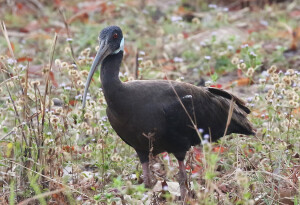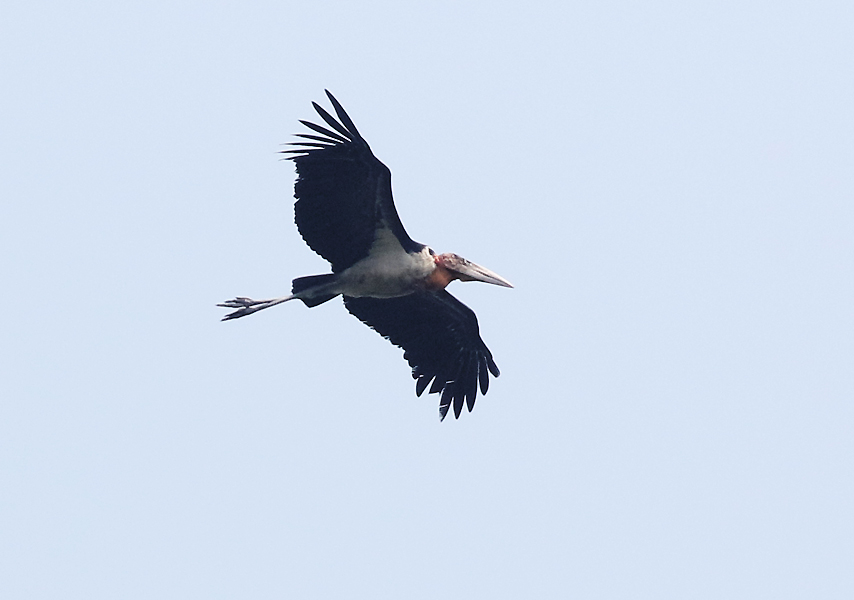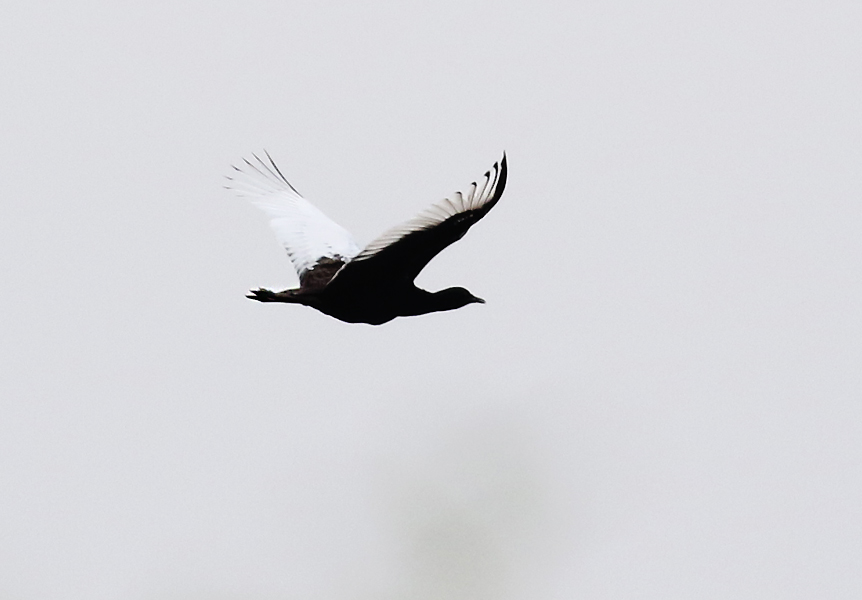
Cambodia is the last refuge of a number of exciting species in Southeast Asia as well as the home of a wide range of birds at a greater abundance than most of the surrounding countries. Leading the Calidris Birding Tours trip to Cambodia in March 2023 gave all of the tour participants the opportunity to see a large number of fantastic birds in this interesting country. With birds as sought-after and as varied as Great Slaty Woodpecker, Asian Woolly-necked Stork, Lesser Adjutant, Slender-billed Vulture, Milky Stork, Black-headed Woodpecker, Cambodian Tailorbird, Chinese Grassbird, Sarus Crane, Rufous-bellied Woodpecker and White-rumped Vulture all being seen but not making the top five list it is clear to see that this was a birding tour full of highlights.
Join me to see the best birds of Cambodia on next year’s trip - Cambodia Birding Tour.
At the end of this successful trip I asked all members of the group and our local guide, Hat Huon, for their birds of the trip. Using the order in which they ranked their favourite species I allocated points and constructed this list of the top five birds of this Cambodia birding tour.
1. Giant Ibis/Coral-billed Ground Cuckoo
Unusually we had a tie for first place in the vote for bird of the trip. Normally I would find some way of creating a tie-breaker but such is the quality of both of these birds that I have retained them as joint “Bird of the Trip”.
Giant Ibis, Pseudibis gigantea
Giant Ibis is one of the rarest and most endangered birds in Asia. It is something of a relic, once formerly more widespread in Cambodia, Vietnam, Laos, Thailand and even Malaysia it is now restricted to a small area in northern Cambodia. Inhabiting a mosaic of woodland interspersed with ancient rice paddies it is shy and prehistoric in both the way it looks and in its decline. Visiting the community forests at Tmat Boey is most birder’s best chance of seeing Giant Ibis and, indeed, this is where we saw a group of three birds.
Leaving our accommodation, in the early morning, we had our breakfast in the field in an area that the local trackers thought that Giant Ibis might be active. As we were finishing our coffee a whooping call filled the air from somewhere in the distance which confirmed the presence of this endangered species in the area. Our local guides knew where there were a couple of marshy pools that often attract Giant Ibis to feed so off we headed in their direction, across small fields of rice stubble and through areas of dry forest. The first spot we checked out drew a blank but as we moved off towards a second area we spotted two Giant Ibis perched on a dead tree which we were able to enjoy from a distance through the telescope. After a while they dropped down to feed in the marshy patch where we could not see them but some time later a local farmer disturbed them so that three birds flew up into the bare trees before giving us wonderful flight views as they moved off to a different area of the forest.
The local guides thought they knew where to find them but after checking out the pools we expected to find them in we saw nothing until suddenly one flew up into a tree close by. Soon after we spotted the other two birds and enjoyed great views of them before leaving them in peace to feed. The rarity value, successful hunt and quality of the views made Giant Ibis a very memorable bird.
Coral-billed Ground Cuckoo, Carpococcyx renauldi
Coral-billed Ground Cuckoo was not a species that we had expected to see on this Cambodia birding tour although visiting Chang Kran Roy in March I did feel that we had some sort of chance of locating one. What I did not anticipate was seeing one quite so well and for such a prolonged period from a hide/blind. Having seen another of the birds that appears on this list at another hide we were given a new opportunity to visit second hide at Chang Kran Roy that had recently been established. In fact it turned out that we were the first group able to visit this hide that had specifically been established to attract Coral-billed Ground Cuckoo.
The whole set up was created to mimic a campsite, complete with campfire to create smoke to alert the bird to breakfast time, and chopped frog on a bird table made from a rough plank of wood. When the Ground Cuckoo first appeared it was just a shadowy apparition in the background, but even this view was exciting. When it did emerge from the undergrowth it came to grab a piece of chopped frog and then ran back into cover. However, it emerged to feast again several more times and it was strange to see this pheasant-sized bird feeding like a predator. I have seen this bird a number of times in neighbouring Thailand but have never associated it with this type of food. The sheer spectacle and surprise of this magnificent species made it one of the most talked-about birds of the tour.
2. Greater Adjutant, Leptoptilos dubius
This bird is a monster; it is as simple as that. The sheer size of it, its ugly look and rarity value make it another bird that is reminiscent of a dinosaur. A boat trip on Tonle Sap to Prek Toal Bird Sanctuary is always an amazing experience and one which I have written about in more length here – Waterbirds at Prek Toal Reserve – and although the sheer numbers and variety of birds there is most memorable, there were three key species we were hoping to see; Lesser Adjutant, Milky Stork and Greater Adjutant.
Lesser Adjutant proved to be no problem with several of them in flight over our boats and perched on trees nearby but Milky Stork took more effort, searching for it from a viewing tower although eventually it gave us excellent views. Greater Adjutant, however, made us wait. Despite scanning the treetops of the large waterbird nesting colony we could not find this key bird and we went back to our boats to hunt for it. Once we had reached the end of the navigable channel it was time to just sit and check out all of the birds swarming in the air. Scanning through this mass of storks and pelicans was tricky until something enormous came gliding through. The sheer size of this bird made us all pick it out from the other birds and a few quick photos of it confirmed its identity. The altitude of this particular individual and the briefness of the view was hardly that satisfactory but a short time later another of these monsters arrived and gave us the type of performance that made it very memorable.
3. Bar-bellied Pitta, Hydrornis elliotii
Of course such a gem of a bird should feature in our top five bird list, it would be madness if it did not, although it gave us a long and nervous wait for it.
Our main reason for visiting the extremely basic eco camp at Chang Kran Roy was to get top quality views of Bar-bellied Pitta which regularly visits a patch of forest overlooked by a hide constructed by the local community. This hide, and its attendant birds, has been established for several years so it was with great expectation that we took our seats and began peering out into the forest glade with its food supplied for birds and bathing pools. Species such as White-rumped Shama, Puff-throated Bulbul, Abbott’s Babbler, Scaly-crowned Babbler and Common Emerald Dove were nice but very much the supporting cast but male Siberian Blue Robins, White-crested Laughingthrush and Green-legged (Scaly-breasted) Partridge upped the level of anticipation. However, the pitta seemed to be absent and as the light began to fade, our bodies beginning to ache from sitting down for a lengthy period we decided that coming back in the morning would give us the best chance to see this fabulous bird. Just as we were leaving, there it was!
A feeling of excitement coupled with relief swept the hide and for the next 15-20 minutes we were able to watch this amazing Bar-bellied Pitta feeding at point-blank range although as the light faded it was very difficult to obtain good photographs so we just watched it until it was too dark to do so.
4. Bengal Florican, Houbaropsis bengalensis
Bengal Florican is another of those birds in Cambodia that has vanished from most of its former range, persisting only in Cambodia and parts of Indian and Nepal. There are several grassland reserves around Tonle Sap that are protected specifically for this species, however, it seems that these may not be extensive enough for successful breeding with Hat telling us that often flooding comes before the chicks are ready to fledge.
After leaving Siem Reap in the early morning we found ourselves arriving in the grasslands shortly after first light to the sound of singing Oriental Skylarks and Horsfield’s Bushlarks. The dry, short grassy areas were also good for great views of Red-throated Pipit and numerous Oriental Pratincoles but as we met up with the local rangers were followed them further into the reserve to an area where they had Floricans staked out and as we stood eating our breakfast a male Bengal Florican appeared; fantastic. Unfortunately it flew away before we could watch it at length although it did not take much time for us to locate two more and watch them strut, race around and even leap on one occasion for a period of half an hour or so. This was a wonderful show.
Later on as we tracked down Manchurian Reed Warbler another Bengal Florican gave us very close flight views to cement this species as one of the favourites of the trip.
5. White-shouldered Ibis, Pseudibis davisoni
Tmat Boey was the location for us to connect with this second critically endangered ibis species. While White-shouldered Ibis is extremely rare it is more numerous at Tmat Boey than Giant Ibis with, apparently, an increasing population at this site due to the protection afforded by the local community.
After arrival on our first day at the sight we headed off into the forest to a location where White-shouldered Ibis had been seen coming in to roost only the day before so our expectations were high. Although it was important to arrive early so that we could hide and not disturb the birds, our enthusiasm meant that we arrived rather too early. Still, we had time to look around and find Rufous Woodpecker and enjoy many of the commoner species again, such as Small Minivet, Indochinese Roller and Rufous-winged Buzzard. Our sweaty skin attracted a rather annoying swarm of sweat bees but this and the lengthy wait sort of served to heighten the magnitude of the wonder of nature that we were about to witness.
As we waited in our hiding place behind a screen of trees the locals told us that sometimes the ibises come in at 6.15 towards darkness but we were lucky as the first few birds turned up at a fraction past six when there was still decent light. Eventually an impressive total of thirteen birds arrived, perched in bare trees for us to admire. This was a wonderful experience.
In terms of the quality of the view, however, this was to be surpassed a few days later with as many as 6 birds next to the dirt road as we drove to look for White-rumped Falcon with one individual (pictured above) posing for photographs right next to our vehicle. This was truly a magical moment.
So, these were our top five (well, top six really) birds of our Cambodia birding tour 2023. Although they are all rare species in their own right the reasons they were voted into the top five over other rare birds that we saw was to do with the quality of the views and the overall experience we had as well as the visual impact of the species.
If you would like to join me on a birding trip in Cambodia take a look at the dates, itinerary and all the details of my next tour - Cambodia Birding Tour.


 April 10th, 2023
April 10th, 2023  Nick
Nick 






 Posted in
Posted in  Tags:
Tags: 









